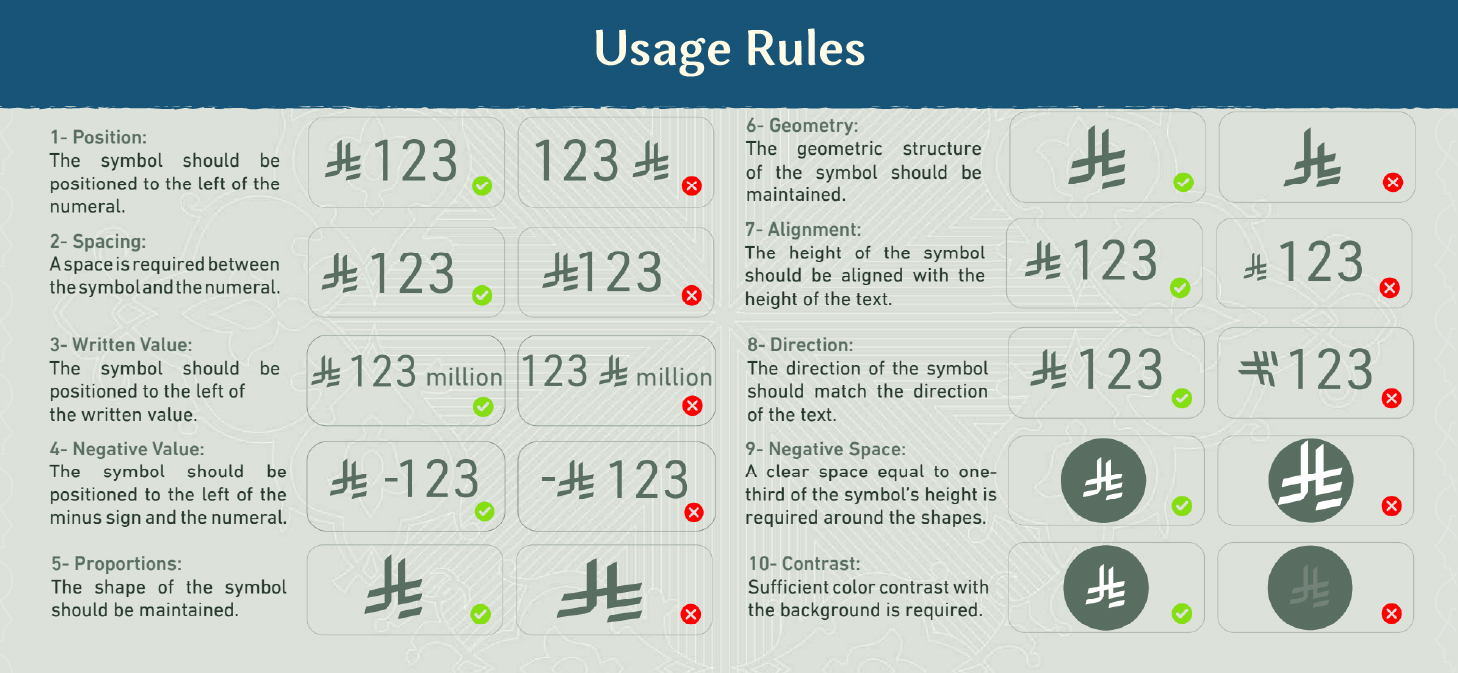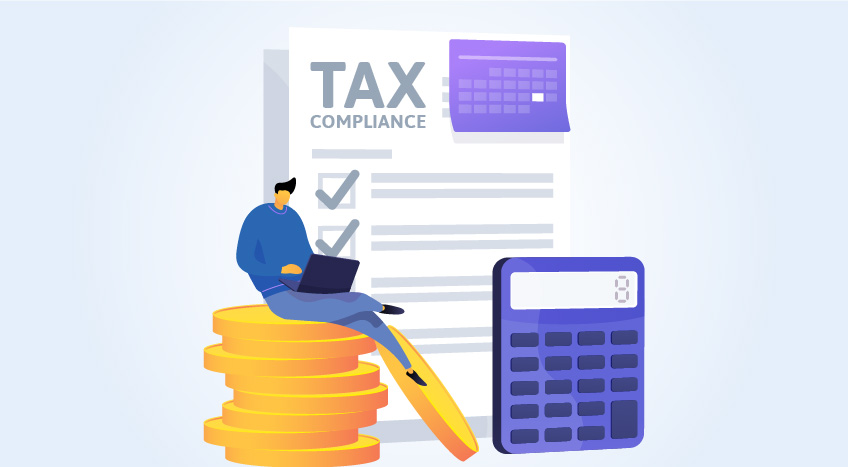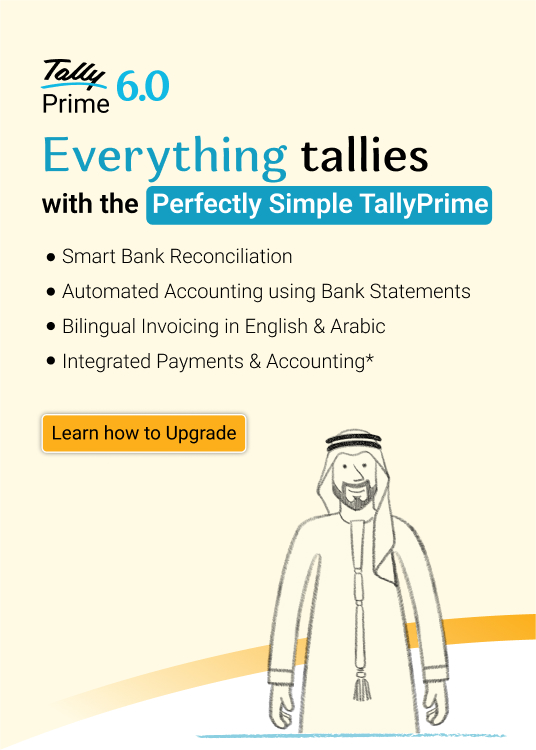Saudi Arabia has introduced a new symbol for the Saudi Riyal, marking a big step in modernising its currency. This change aims to align with international standards, make digital use easier, and boost the Riyal’s presence in the global market. The new symbol is easy to recognise, simple to add to software, and clear on both print and digital platforms.
To help everyone adjust, the government has shared clear guidelines on how to use the new symbol correctly. These cover where to place it, which fonts to use, and how to add it to accounting systems, banking apps, retail pricing, and other digital platforms.
In this article, we will break down these official recommendations, show you where and how to use the new symbol, to help you stay compliant. Whether you are a business owner, designer, developer, or just curious about this change, you will find all you need to know here.

New Saudi Riyal symbol usage rules: Key points
To ensure consistency and clarity, businesses, media outlets, and software systems need to follow specific guidelines for the symbol’s proper usage, placement, and styling. Below are the key rules you should know to correctly implement the new symbol of the Saudi Riyal.
Where to use it?
- Price tags and store signage
- Invoices and receipts
- Bank statements and financial documents
- e-Commerce platforms and mobile apps
- POS (Point of Sale) systems
- Government forms and corporate reports
Note: The symbol should replace older abbreviations like SAR/SR wherever possible
How to use it?
- Follow official typography and sizing rules
- Maintain consistent symbol placement (before or after value)
- Use approved fonts and styles
- Ensure proper encoding (Unicode updates pending)
Here is a detailed visual of usage rules for the symbol:

Who needs to update the Saudi Riyal currency symbol?
- Business owners and retailers
- Accountants and finance teams
- Designers and branding professionals
- Software developers and IT departments
- Government agencies and public institutions
What’s next?
- Refer to the official guidelines from SAMA (Saudi Central Bank)
- Update digital and print templates
- Revise software interfaces and data systems
- Train staff on correct usage
Adoption requirements for businesses and other entities
While the symbol's adoption is mandatory, its implementation across financial and commercial transactions is being carried out gradually, with coordination among all relevant entities to ensure a smooth transition.
All entities operating within Saudi Arabia are required to adopt the new Riyal symbol, including:
- Businesses: Incorporating the Saudi Arabian Riyal symbol in invoices, receipts, price tags, and marketing materials.
- Government agencies: Updating official documents, reports, and digital platforms to reflect the new symbol.
- Software vendors: Ensuring that accounting, invoicing, and financial software support the new symbol and are compliant with SAMA's guidelines.
All entities are encouraged to adopt the new symbol to align with standardisation and digital readiness.
Implementation tips
Adopting the new Saudi Riyal symbol requires updates across digital systems, printed materials, and third-party platforms. To ensure a smooth and accurate transition, businesses should take a structured approach to reviewing, updating, and testing all systems that use the currency symbol. The following tips will help organisations implement the change efficiently and remain compliant with official guidelines.
- Audit all platforms where currency is displayed
The first step in adopting the new Saudi Riyal symbol is to conduct a thorough audit of every platform where currency values appear. This includes accounting systems, POS (Point-of-Sale) terminals, websites, mobile apps, invoices, receipts, and any printed or digital material that uses the currency symbol. Identifying all these touchpoints ensures that no component is overlooked during the transition.
- Coordinate with software teams or service providers
Once you have identified where updates are needed, your internal software team and external service providers, must be informed and involved. They will be responsible for implementing the necessary changes, including updates to code, configuration files, and databases to reflect the new Riyal symbol correctly. Early coordination helps avoid delays and ensures technical accuracy across systems.
- Ensure digital compatibility (fonts, unicode, layout)
Digital platforms may require updates to fonts that support the new Riyal symbol, as well as Unicode compatibility to display it correctly across browsers and devices. Some user interface (UI) elements may also need layout adjustments, such as resizing input fields or aligning text, to accommodate the symbol without disrupting the design or user experience.
- Contact third-party software vendors
Suppose your business relies on third-party platforms, such as ERP systems, accounting software, or e-commerce solutions. In that case, it’s essential to contact vendors and confirm whether they have adopted the new symbol. If updates aren’t in place yet, you may need to ask your vendor to add the new symbol or provide a patch (a small software update) to enable it. This ensures consistency across all business tools and platforms.
- Test for cross-platform compatibility
In-house IT departments should rigorously test all relevant systems to ensure the new symbol renders correctly across different browsers (e.g., Chrome, Safari, Edge), operating systems (e.g., Windows, macOS, Android, iOS), and devices (desktop, tablet, mobile). Testing helps catch any display issues early and ensures a seamless experience for users and customers alike.
Resources or templates provided by the government
The Saudi Central Bank (SAMA) has begun providing technical documentation and implementation guidance through its official website. These include:
- Style guidelines for the symbol's appearance in both Arabic and English contexts
- Printable templates for invoices, receipts, and bank statements
- Develop documentation for integration in websites and digital products
These resources aim to streamline the update process and ensure consistency in usage across sectors.
The introduction of the official Saudi Riyal symbol marks a significant step in modernising the Kingdom’s financial identity. By replacing inconsistent abbreviations with a culturally inspired, globally recognised symbol, Saudi Arabia enhances Riyal's clarity and prestige in the international market. Through coordinated efforts, gradual implementation, and strong technical support, businesses and institutions are equipped to adopt the change smoothly.
This initiative not only aligns with Vision 2030 but also reinforces the Kingdom’s commitment to innovation, consistency, and cultural pride across financial and digital systems. Adoption ensures unified representation and strengthens national and global confidence in the currency.
With TallyPrime's latest release, businesses in Saudi Arabia can integrate external applications and systems with greater confidence—especially when working with the Saudi Riyal (SAR).
As more KSA businesses adopt integrated accounting, invoicing, and payment ecosystems, accurate handling of currency symbols becomes critical. TallyPrime is built to correctly interpret and display the Saudi Riyal symbol when transactions are imported from third-party systems. This ensures that data flowing into TallyPrime remains clean, readable, and consistent across records.
By following the required encoding standards during integrations, TallyPrime prevents common issues such as failed imports or incorrectly displayed currency symbols. The result is smoother system integrations, reliable transaction records, and uninterrupted accounting workflows.









